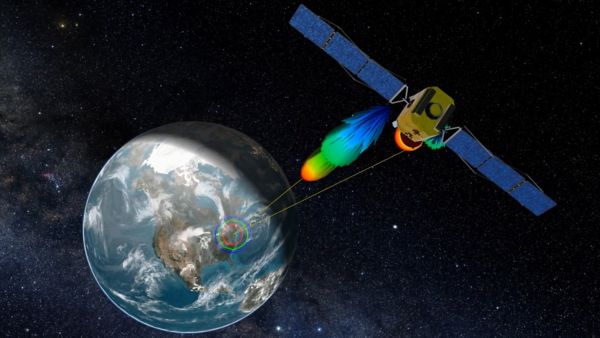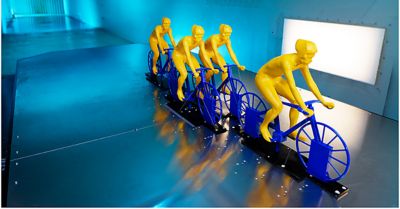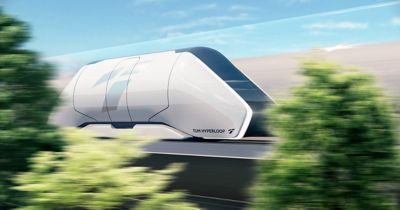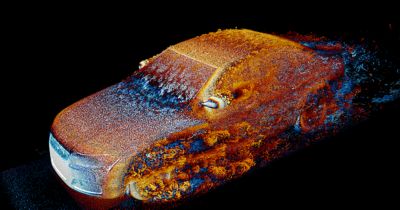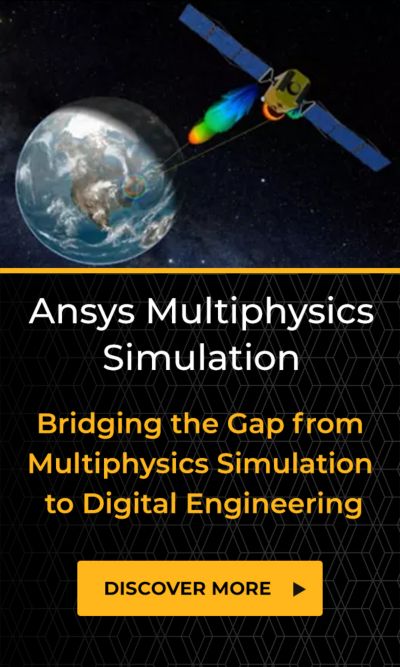-
United States -
United Kingdom -
India -
France -
Deutschland -
Italia -
日本 -
대한민국 -
中国 -
台灣
-
Ansys is committed to setting today's students up for success, by providing free simulation engineering software to students.
-
Ansys is committed to setting today's students up for success, by providing free simulation engineering software to students.
-
Ansys is committed to setting today's students up for success, by providing free simulation engineering software to students.
-
Contact Us -
Careers -
Students and Academic -
For United States and Canada
+1 844.462.6797

Discover how the aircraft technology leader uses GPU-powered simulation to speed safety and performance improvements in helicopter aerodynamics.
Francesco Manara spends a lot of time thinking about how things fly. He’s a numerical aerodynamics technical leader tasked with an incredibly important mission: optimizing helicopter aerodynamics for Leonardo Helicopters, a division of a global industrial group that builds technological capabilities in aerospace, defense, and security for governments, defense agencies, institutions, and enterprises.
Customers rely on Leonardo rotorcraft to flawlessly perform during all types of missions, including military, search-and-rescue, medical emergency services, law enforcement, and aerial work operations. Manara relies on Ansys computational fluid dynamics (CFD) software powered by GPUs to accelerate the aerodynamic analysis responsible for their safe operation.

AW139 Search and Rescue cabin crew in flight (left). Passenger transport AW139 performing offshore operations (right).
Simulation: An Aerodynamic Force for Good
Aerodynamics play an important role in a helicopter’s ability to lift off and land without a runway — an essential attribute of these amazing flying machines that makes them so valuable to Leonardo customers. It’s the airfoils, or curved surfaces on the rotor blades of the main and tail rotors that bend or manipulate the air to generate enough lift to get off the ground.
Yet there are other aerodynamic forces at play that set a helicopter in motion. Once liftoff is achieved, a pilot will transition from hovering to directional flight using cyclic inputs to tilt the rotors and thrust the helicopter forward. Additionally, drag created by airflow across the body of a rotorcraft must be considered to fine-tune performance.
For the Aerodynamic Technologies team, aerodynamic optimization extends beyond the aerodynamic characteristics of a single rotor blade. To ensure Leonardo rotorcraft take flight, Ansys Fluent CFD software is used to model the entire airframe in all its parts that are touched by external air.
CFD visualization of turbulent structures around a ship for rotorcraft landing simulations
Fluent software is used mostly for external aerodynamic simulations. The process begins with a simple analysis of an airframe to characterize aerodynamic loads, then extends to virtual blade models of the rotors with over set mesh technology. The more detailed rotor analyses result in larger models characterized by a much higher level of complexity during CFD analysis, including stress-blended eddy simulation (SBES) analysis involving long solve times.
To get analyses of these massive models off the ground faster requires massive CFD and cloud computing capabilities. This enables users to remotely interact with simulations running on the cloud and solve much larger computational challenges associated with bigger models in a simulation environment.
Tapping into multi-GPU and cloud computing capabilities also enables the large-scale parallelization of massive CFD simulations. This reduces power consumption while simultaneously speeding simulation by up to 10 times.
“Of course, for such a complex machine like the helicopter, the challenge is to correctly represent unsteady phenomenon happening on the rotor, mainly on the rotor air flow interaction,” says Manara. “We rely on Ansys for correctly representing those kinds of phenomena while keeping the computational costs affordable for us.”
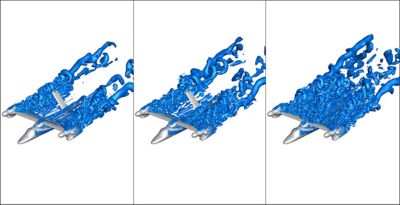
CFD visualizations of turbulent structures on a tiltrotor in airplane mode
From CPU to GPU: 2.6 Times Faster Modeling With Fewer Resources
In general, helicopters go through a long list of certification stages that involve many performance and safety touchpoints along the way. So, depending on the part of the helicopter requiring certification, either subject experimental analysis of single-case experimental designs or numerical analysis is required. This activity usually includes a dialog with the certifying subject.
Improper evaluation of a rotor design, for instance, can lead to aerodynamic problems that can significantly affect a helicopter in flight, as well as fundamental customer mistrust in Leonardo rotorcraft. It can also result in phenomena that can adversely impact certification, such as a blade or rotor generating a higher noise level than expected.
The Aerodynamic Technologies team began engaging with Fluent software’s multi-GPU solver out of sheer necessity. Numerous customer requests to make design changes required them to run a full flight or performance envelope based on aircraft design capabilities, which was simply taking too long. For the largest cases, five days were needed to run one envelope point. Thinking about envelopes of at least 10 design points would require 50 days to answer customer requirements.
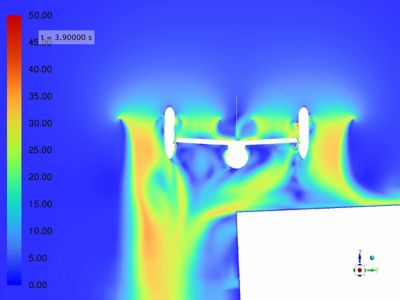
CFD visualization of the velocity field around a tiltrotor hovering near an obstacle
With the GPU solver, the team was able to compress that process and quickly respond to customers, addressing concerns about operational safety and structural integrity.
"Our ability to harness the power of Ansys Fluent native multi-GPU solver has saved us considerable time while using a fraction of the typical hardware resources,” says Manara. “For example, we wanted to assess the external aerodynamics for airframe loads — a resource-intensive simulation — with the same reliability as the traditional Ansys CPU solver. With the native GPU solver, we ran our model 2.6 times faster using only one-third of the hardware resources compared with the CPU solver.”
In this specific case, Manara roughly estimates that energy consumption was reduced from 85KWh to 16KWh, resulting in an 80% energy savings.
The GPU solver also enabled Leonardo to run large eddy simulations (LES), or mathematical models for turbulence in CFD, for certain simplified cases where previously the computational costs were too high. This enabled the team to run simulations at a radically higher fidelity, resulting in more information, more accurate results, further optimization, and a way to solve bigger problems.
In the end, going from a CPU to a GPU solver resulted in significant performance improvements for Leonardo, yielding faster results that required fewer computational resources. Another helpful outcome was the potential reduction in energy consumption realized in shorter computational times.
Of course, there’s more. To learn more about the Fluent GPU solver, including speed-up and validation benchmarks, please access our "Ansys Fluent Native Multi-GPU Solver: CFD Validation Studies" white paper.
Just for you. We have some additional resources you may enjoy.
"Our ability to harness the power of Ansys Fluent native multi-GPU solver has saved us considerable time while using a fraction of the typical hardware resources."
— Francesco Manara, numerical aerodynamics technical leader, Leonardo Helicopters
The Advantage Blog
The Ansys Advantage blog, featuring contributions from Ansys and other technology experts, keeps you updated on how Ansys simulation is powering innovation that drives human advancement.




